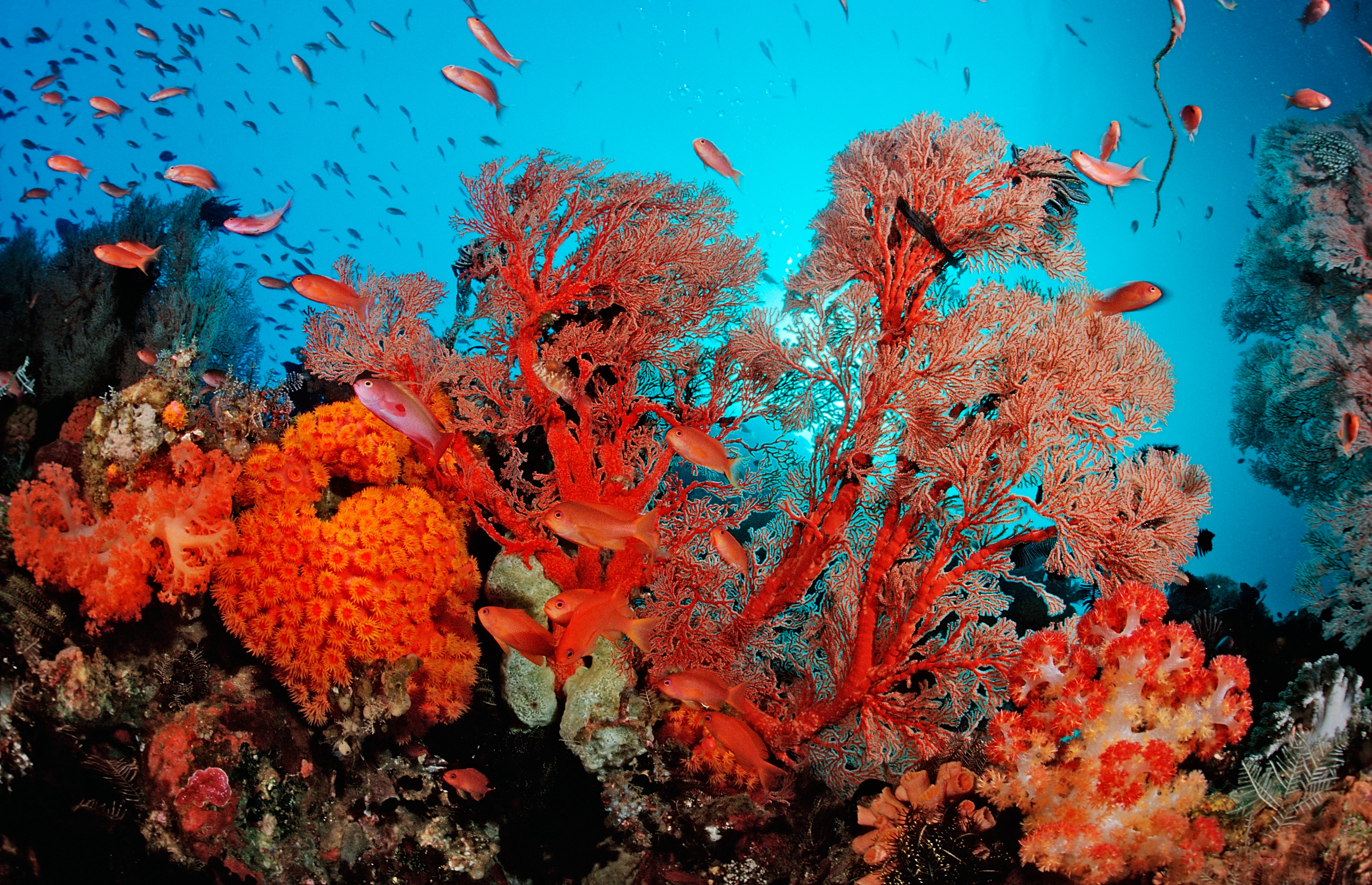
Oceans are heating up at breakneck speed, and the warming waters are threatening marine animals all over the world.
That’s the alarming takeaway from a pair of new studies on marine warming published this week in the journal PLOS Climate.
The first study looks back in time to find out how the oceans have changed since the Industrial Revolution, when humans began rapidly pumping greenhouse gases into the atmosphere. Using historical temperature records dating back to the 1800s, scientists Kisei Tanaka and Kyle Van Houtan evaluated the changing frequency of “extreme marine heat events.”
Around the turn of the 20th century, these kinds of marine heat events were relatively rare. The scientists looked specifically at events falling into the top 2 percent of high temperatures. Around the year 1900, these events would have happened about once every 50 years.
The researchers then calculated how common these extreme heat events are today. They’re becoming the norm across much of the world. By 2014, half the world’s ocean area exceeded the extreme heat threshold. By 2019, the last year the scientists examined, 57 percent of the world’s oceans had hit the mark.
In other words, temperatures that would have occurred only rarely a century ago have now become routine.
The findings demonstrate that the influence of climate change on the world’s oceans isn’t just a problem for the future, Tanaka told E&E News in an interview.
“It is happening as we speak,” he said. “It has been happening for quite some time.”
Still, other forward-looking studies warn that the effects will only get worse as the planet continues to warm.
The second PLOS Climate study looks specifically at the impact of future marine warming on coral reefs. Prolonged heat can cause reefs to “bleach,” or expel the colorful algae living inside them. These algae help provide the corals with nutrients—and if they go too long without them, they can die.
Bleached reefs are often able to fully recover within a decade, as long as they don’t get hit with another heat event in the meantime. But marine heat waves are growing more common and more severe over time as average ocean temperatures climb upward.
The new study looks at areas of the ocean known as coral “refugia”—these are places where local water and weather conditions are able to shield reefs from the warming conditions that affect surrounding areas. In some coastal areas, for instance, local wind patterns help to churn up the sea and allow cold water to bubble up from near the ocean floor.
The new study defines coral refugia as places where marine heat events—of the caliber likely to cause corals to bleach—occur only about once every 10 years. These spots are likely to have enough time to fully recover between bleaching events.
Currently, the study estimates that around 84 percent of the world’s reefs are located in these kinds of protected areas.
But even a little bit of future warming may change that.
Under 1.5 degrees Celsius of global warming, that percentage plummets to about 0.2 percent of the world’s reefs. Meanwhile, about 90 percent of all the world’s reefs will lie in areas likely to experience a marine heat event at least once every five years—meaning the chances of full recovery in between bleaching events is slim.
Under 2 C of warming, all of the world’s reefs will lie in areas likely to experience at least one heat event every 10 years. And 99.7 percent of them are likely to be hit every five years. At this threshold, the world’s reefs are likely to experience significantly more bleaching events, and some corals may begin to die off.
The goal of the Paris climate agreement is to keep global temperatures within 2 C of their preindustrial levels at all costs, and within 1.5 C if possible. Numerous studies suggest that the effects of climate change will significantly worsen above these levels.
Still, the new study points out that every little bit of warming has consequences. Even meeting the Paris targets won’t keep the world’s coral reefs out of danger.
“Our finding reinforces the stark reality that there is no safe limit of global warming for coral reefs,” said Adele Dixon, a coral expert at the University of Leeds in the United Kingdom and lead author of the new study, in a statement.
The two studies out this week underscore the growing risks posed by the warming oceans. They’re hardly the first to raise the alarm.
Numerous studies have warned that the oceans are heating up, that marine heat waves are growing more frequent and more severe, and that marine organisms are suffering the consequences. Corals are bleaching more often, fish are migrating into new areas, and some fisheries are starting to decline.
The past few years, in particular, have seen some worrying milestones for marine climate change. The last three years in a row have all broken records for ocean heat.
A paper published last month concluded that the world’s oceans reached their hottest levels ever recorded in 2021 (Climatewire, Jan. 12).
Reprinted from E&E News with permission from POLITICO, LLC. Copyright 2022. E&E News provides essential news for energy and environment professionals.
